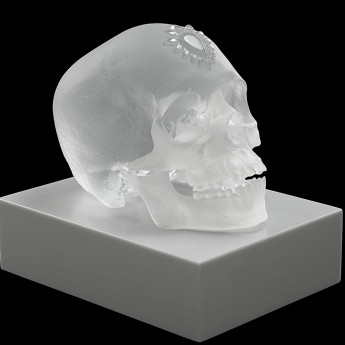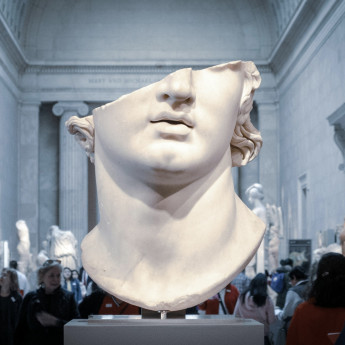
Details
Artist
Styles
Limited edition of 99 silkscreens - Hand signed and numbered by Uecker // Hiob Seite 24 by Günther Uecker is a limited edition silkscreen print that delves into abstract expressionism with its bold, textured strokes. Uecker’s composition features a prominent triangular form, roughly painted in white against a background of heavy, dark brushstrokes, creating a powerful contrast. The triangle, a symbol often associated with balance and strength, appears almost suspended amidst chaotic, swirling black strokes, possibly referencing themes of resilience and struggle. The piece is part of a series inspired by the Book of Job (Hiob in German), reflecting Uecker’s engagement with themes of suffering, endurance, and faith. Hand-signed and numbered, this work showcases Uecker’s unique style, blending expressive brushwork with contemplative symbolism.
Hiob Seite 24
form
Medium
Size
52 x 50 cm
- Inches
- Centimeters
Edition
Price
- USD
- EUR
- GBP
Details
Artist
Styles
Limited edition of 99 silkscreens - Hand signed and numbered by Uecker // Hiob Seite 24 by Günther Uecker is a limited edition silkscreen print that delves into abstract expressionism with its bold, textured strokes. Uecker’s composition features a prominent triangular form, roughly painted in white against a background of heavy, dark brushstrokes, creating a powerful contrast. The triangle, a symbol often associated with balance and strength, appears almost suspended amidst chaotic, swirling black strokes, possibly referencing themes of resilience and struggle. The piece is part of a series inspired by the Book of Job (Hiob in German), reflecting Uecker’s engagement with themes of suffering, endurance, and faith. Hand-signed and numbered, this work showcases Uecker’s unique style, blending expressive brushwork with contemplative symbolism.
- Recently Added
- Price (low-high )
- Price (high-low )
- Year (low-high )
- Year (high-low )
What is land art?
Also referred to as Earth Art, Earthworks, or Environmental Art, Land Art is a sculptural movement that involves creating artworks that integrate conceptual or physical elements of the earth or landscape into the finished piece. These works often interact directly with the environment, using natural materials and settings to explore themes related to nature, place, and time







































